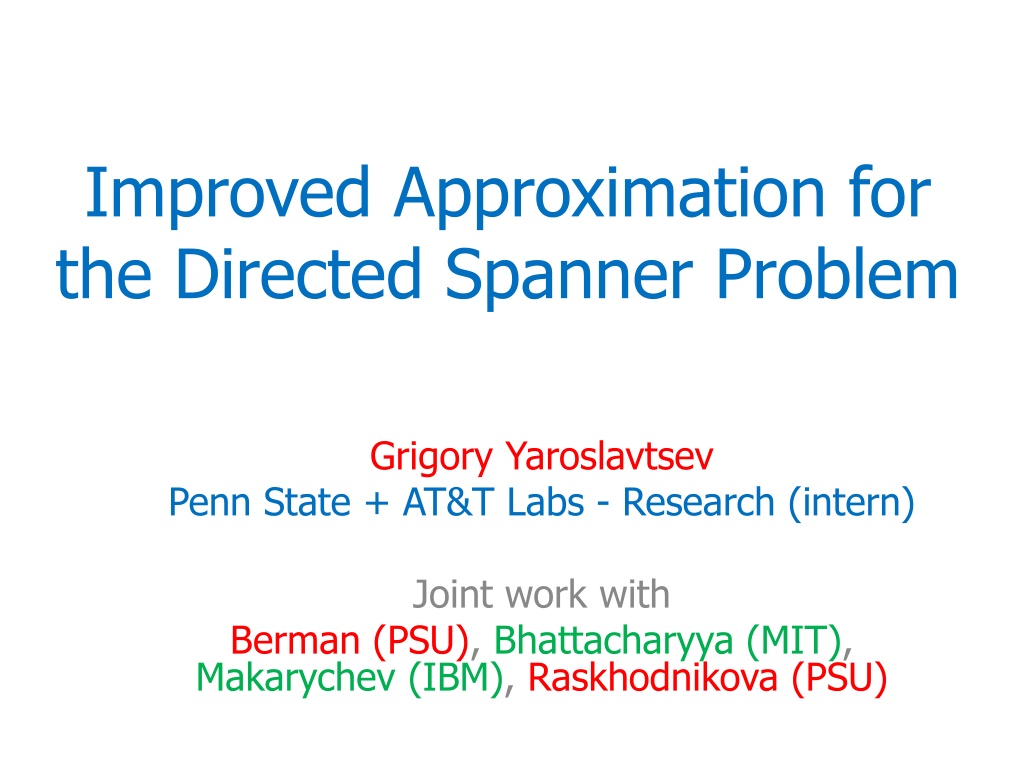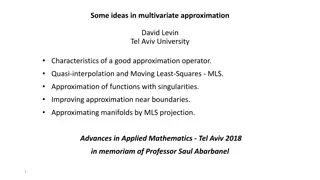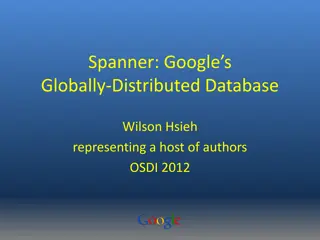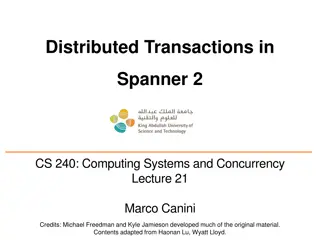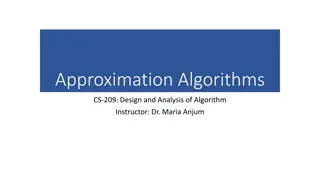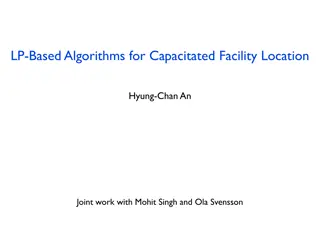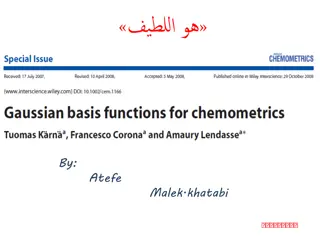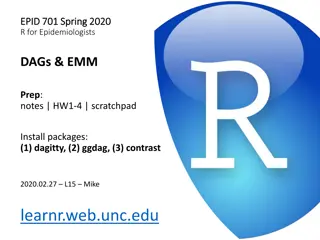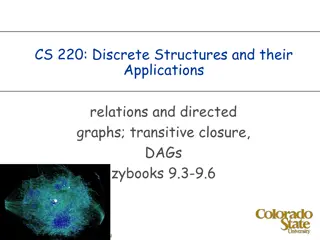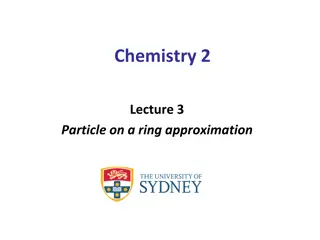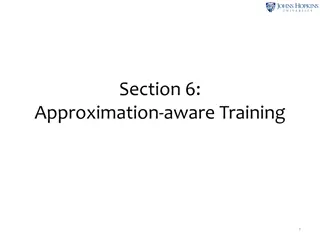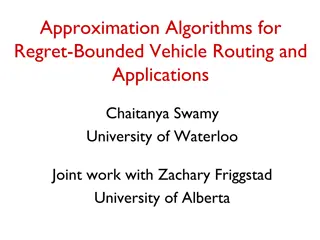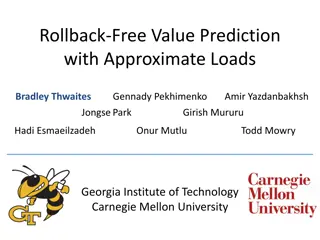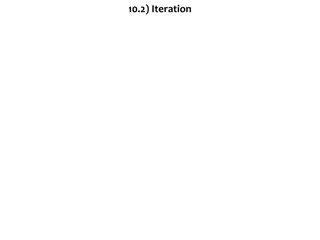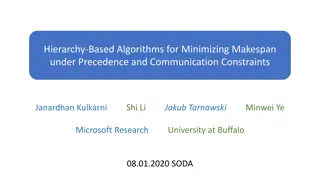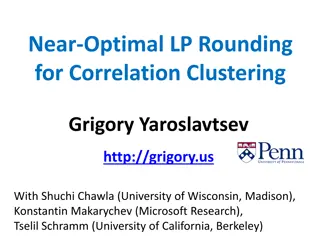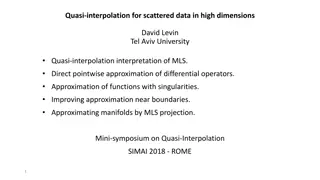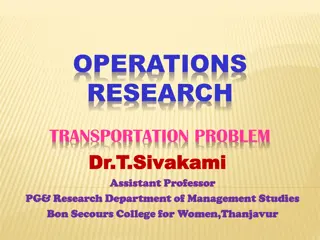Improved Approximation for the Directed Spanner Problem
Grigory Yaroslavtsev and collaborators present an improved approximation for the Directed Spanner Problem, exploring the concept of k-Spanner in directed graphs. The research delves into finding the sparsest k-spanner, preserving distances and discussing applications, including simulating synchronized protocols, efficient routing, and algorithms for approximate distance oracles.
Download Presentation

Please find below an Image/Link to download the presentation.
The content on the website is provided AS IS for your information and personal use only. It may not be sold, licensed, or shared on other websites without obtaining consent from the author. Download presentation by click this link. If you encounter any issues during the download, it is possible that the publisher has removed the file from their server.
E N D
Presentation Transcript
Improved Approximation for the Directed Spanner Problem Grigory Yaroslavtsev Penn State + AT&T Labs - Research (intern) Joint work with Berman (PSU), Bhattacharyya (MIT), Makarychev (IBM), Raskhodnikova (PSU)
Directed Spanner Problem k-Spanner [Awerbuch 85, Peleg, Sh ffer 89] Subset of edges, preserving distances up to a factor k > 1 (stretch k). Graph G V,E k-spanner H(V, ?,? ? ??????,? ? ?????(?,?) Problem: Find the sparsest k-spanner of a directed graph (edges have lengths). H(V, ?? ?) ):
Applications of spanners First application: simulating synchronized protocols in unsynchronized networks [Peleg, Ullman 89] Efficient routing [PU 89, Cowen 01, Thorup, Zwick 01, Roditty, Thorup, Zwick 02 , Cowen, Wagner 04] Parallel/Distributed/Streaming approximation algorithms for shortest paths [Cohen 98, Cohen 00, Elkin 01, Feigenbaum, Kannan, McGregor, Suri, Zhang 08] Algorithms for approximate distance oracles [Thorup, Zwick 01, Baswana, Sen 06]
Applications of directed spanners Access control hierarchies Previous work: [Atallah, Frikken, Blanton, CCCS 05; De Santis, Ferrara, Masucci, MFCS 07] Solution: [Bhattacharyya, Grigorescu, Jung, Raskhodnikova, Woodruff, SODA 09] Steiner spanners for access control: [Berman, Bhattacharyya, Grigorescu, Raskhodnikova, Woodruff, Y ICALP 11 (more on Friday)] Property testing and property reconstruction [BGJRW 09; Raskhodnikova 10 (survey)]
Plan Undirected vs Directed Previous work Framework = Sampling + LP Sampling LP + Randomized rounding Directed Spanner Unit-length 3-spanner Directed Steiner Forest
Undirected vs Directed Every undirected graph has a (2t-1)-spanner with ?1+1/?edges. [Althofer, Das, Dobkin, Joseph, Soares 93] Simple greedy + girth argument 1 ? approximation Time/space-efficient constructions of undirected approximate distance oracles [Thorup, Zwick, STOC 01] ?
Undirected vs Directed For some directed graphs ?2edges needed for a k-spanner: No space-efficient directed distance oracles: some graphs require ?2space. [TZ 01]
Unit-Length Directed k-Spanner O(n)-approximation: trivial (whole graph)
Overview of the algorithm Paths of stretch k for all edges => paths of stretch k for all pairs of vertices Classify edges: thick and thin Take union of spanners for them Thick edges: Sampling Thin edges: LP + randomized rounding Choose thickness parameter to balance approximation
Local Graph Local graph for an edge (a,b): Induced by vertices on paths of stretch ? from a to b Paths of stretch k only use edges in local graphs Thick edges: ? vertices in their local graph. Otherwise thin.
Sampling [BGJRW09, FKN09, DK11] Pick ???? seed vertices at random Add in- and out- shortest path trees for each Handles all thick edges ( their local graph) w.h.p. # of edges 2 ? 1 ? vertices in ???? ??? ? .
Key Idea: Antispanners Antispanner subset of edges, which destroys all paths from a to b of stretch at most k. Spanner <=> hit all antispanners Enough to hit all minimal antispanners for all thin edges Minimal antispanners can be found efficiently
Linear Program (dual to [DK11]) Hitting-set LP: ? ? ?? ??? ?? 1 ? ? for all minimal antispanners A for all thin edges. # of minimal antispanners may be exponential in ? => Ellipsoid + Separation oracle Good news: ? antispanners for a fixed thin edge Assume, that we guessed the size of the sparsest k-spanner OPT (at most ?2 values) 1 2? ln ?minimal ?= ?
Oracle Hitting-set LP: ? ? ?? ??? ?? 1 ? ? for all minimal antispanners A for all thin edges. We use a randomized oracle => in both cases oracle can fail with some probability.
Randomized Oracle = Rounding Rounding: Take e w.p. ?? = min SMALL SPANNER: We have a spanner of size ??? ? ? ??? ? Pr[LARGE SPANNER or CONSTRAINT NOT VIOLATED] e ( ?) ???? ??,1 ? w.h.p.
Unit-length 3-spanner ?(?1/3)-approximation algorithm Sampling: ?(?1/3) times Dual LP + Different randomized rounding (simplified version of [DK 11]) For each vertex ? ?: sample a real ?? 0,1 Take all edges ?,? : min ??,?? ?(?1/3)?(?,?) Feasible solution => 3-spanner w.h.p.
Conclusion Sampling + LP with randomized rounding Improvement for Directed Steiner Forest: Cheapest set of edges, connecting pairs ??,?? Previous: Sampling + similar LP [Feldman, Kortsarz, Nutov, SODA 09] Deterministic rounding gives ? ?4/5+?- approximation We give ? ?2/3+?-approximation via randomized rounding
Conclusion ( ?)-approximation for Directed Spanner Small local graphs => better approximation Can we do better? Hardness: only excludes polylog(n)- approximation Integrality gap: ?(??/? ?) Our algorithms are simple, can more powerful techniques do better?
Thank you! Slides: http://grigory.us
